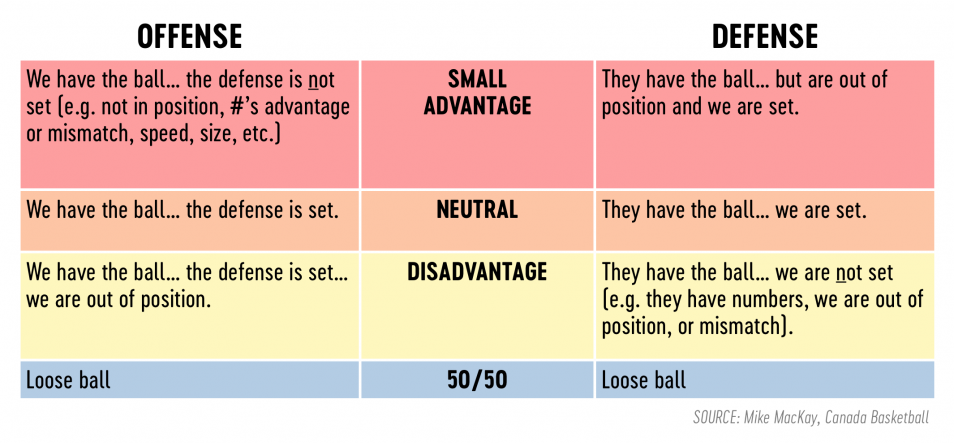Every coach has been in the frustrating situation where their athletes don’t do, in a game, the things that they worked on during practice.
There’s the common refrain bellowing from sidelines throughout the basketball world: “C’mon! We worked on that!”
If you’re looking for a solution, start with you…
Is This A Game-Like Drill?
This is the question that so many coaches struggle with. Me too (…!).
When I reflect and attempt to answer it for myself, what I’ve come to learn is that it’s (most likely) my fault. The way I planned practice was different from what a basketball player is required to do in the game.
Here are eight (8) situations coaches should (re-)create to make your drills more “game-like” from Canada Basketball’s Mike MacKay…

Contextualizing skill introduction/development with scenarios that mimic what happens in the actual game is where the real art of coaching comes in.
The most important aspect of any skill execution is that the movement execution (or decision making) is determined by the environment.
Teaching – or learning – a skill without contextual triggers (i.e. representative stimulus) in place is, to me, self-defeating.
If there’s no context (i.e. decision cues), then what they’ve learned to do is not representative – or, said differently, is a different skill – than what they’ll be required to do in the actual game.
Remember…
The application of a skill or action in the game is often a different skill than what was designed in practice. Fight hard to avoid static starts in your drills and limit doing things ‘on-air’ (e.g. 1v0, 2v0, 3v0, etc).
A key performance indicator that will help you gauge retention and transfer (i.e. learning) is whether your athletes can apply/use the skill in the various situations; or, if it’s a strategy/tactic, whether they can apply the concept(s) in the various situations.
To Know And Not Do…
I’m continually leaning on Stephen Covey’s words:
“To know and not to do is really not to know.”
That thought, when emboldened with the words of Wooden, “…you haven’t taught until they’ve learned,” forms the basis for how I reflect upon and assess my methodology.
If context is king, then practice design is queen.
Coach creatively representatively. 😉
—s.